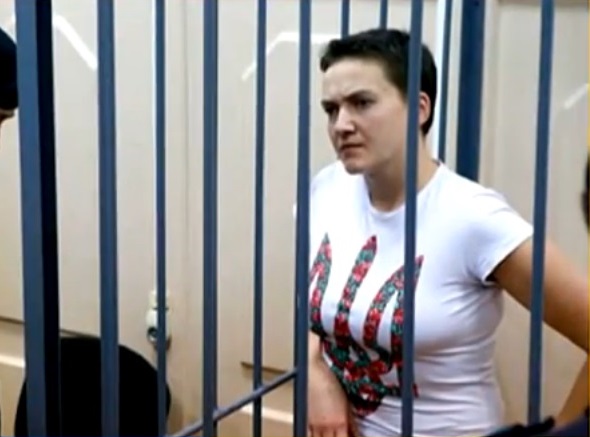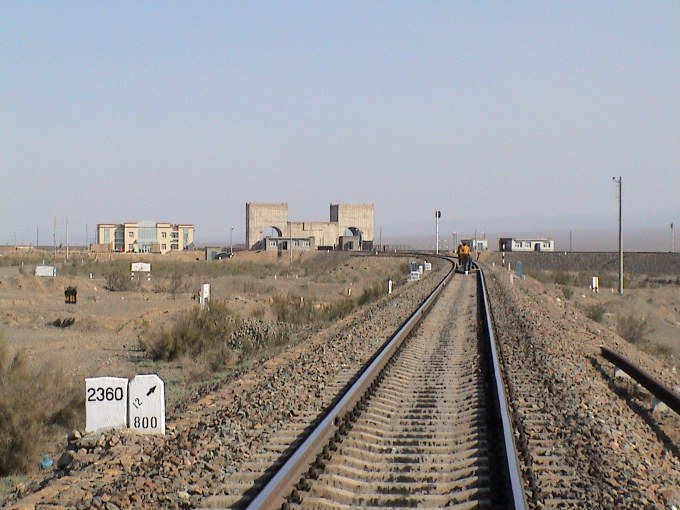
This past week, the Ukrainian pilot Nadiya Savchenko, who has become iconic as the Joan of Arc of Ukraine, was finally returned to Kiev in a prisoner swap between Ukraine and Russia. Savchenko, who had earlier this year been sentenced to 22 years in prison by a Russian federal court, was released by Russian authorities in exchange for two Russian servicemen who had been captured in Eastern Ukraine, whom Russia claims were volunteers in Donbass but not active servicemen when they were captured. The Russian government has, of course, not admitted that they have actually been present in Eastern Ukraine or that they have supported the rebels in any way beyond moral support. So while the Russian servicemen’s release was less reported about in Russia outside of coverage on them reuniting with their families, Savchenko came back to Ukraine in a big way.
Nadiya Savchenko returned to Kiev in a blaze of glory. After remaining in Russian custody for nearly two years, she had grown to be quite the public figure in the country. While on the tarmac after landing, she was greeted by a host of media outlets, and then quickly went to a meeting with Ukrainian President Petro Poroshenko, where she was declared as a “Hero of Ukraine” for her perseverance. In immediate statements upon landing back in Ukraine, she showed appreciation to the Ukrainian public for her release and said that she was “ready to once again give my life” for her country.
Savchenko has been in detention for nearly two years, after being captured in Eastern Ukraine and then being transferred to Russia by pro-Russian separatists. There, she was accused of illegally crossing into Russia and killing two Russian state reporters who were in Eastern Ukraine, even though phone data showed that the reporters were killed an hour after Savchenko was captured. Her deteriorating health, poor prison conditions, and unfair trial and detention were all cited as reasons for international governments’ criticism of Russia for her imprisonment. However, it was her defiance in the face of her detention that won her the support of the Ukrainian public. Throughout her detainment and subsequent trial, she remained brave and defiant, wearing a shirt with a prominent Ukrainian state symbol on it, going on a hunger strike, disrupting her trial by singing a nationalist Ukrainian song, and even giving her judge the middle finger at one point. Her determination and her story have won over the hearts and minds of many Ukrainians, and she is seen in the country as a national figure and a symbol of resistance against Russian aggression.
Petro Poroshenko has, over the past two years, consistently condemned Russia for Savchenko’s detention and called on Russian President Vladimir Putin to release her. And now, with the help of Western powers and multiple negotiations, this has finally happened. If looking merely at outward appearance, this would seem like a triumphant moment for Poroshenko. He even took it as a chance to proclaim that he would take back Crimea and Eastern Ukraine. However, what should be a triumphant moment for Poroshenko could quickly prove to be a burden politically. Very quickly after returning home, Savchenko told journalists that, if the Ukrainian people wished, she would run for the presidency.
This comment should not be taken lightly. Nadiya Savchenko has become not only a major public figure in Ukraine, but an icon and symbol of resistance of the Ukrainian people. She is revered by most of the population and abroad. The public opinion on President Poroshenko, however, is a different matter entirely. The Ukrainian President, who has been in power since 2014, has become increasingly unpopular over his time in office due to the slow pace of reform in the country and accusations of corruption against him. The allegations of corruption were reinforced earlier last month with the release of the Panama Papers, which listed Poroshenko as one of many government officials around the world that had offshore shell companies, but one of the few official heads of state mentioned in the documents. However, to most Ukrainians, this came as no surprise. They see their government as corrupt to the core, because, for the most part, it is. And Petro Poroshenko, as head of that government, is the face of that corruption.
Previous posts on this blog have heavily criticized President Poroshenko, and rightfully so. He has stalled on reforms and has shown to be a very corrupt individual, and instead of attempting to heal the country he has only built a clout around him made up of those loyal to him. If he had any sense of dignity or responsibility for his post, then he would step down. But that does not make any other alternative to Poroshenko ideal for the country. Nadiya Savchenko becoming president of Ukraine is certainly an idea many Ukrainians would like to entertain, particularly because of her recent comments, but it’s important to remember exactly who she is. She is not a politician, she is a pilot in the Ukrainian military. Although it would be optimistic to hope for outsiders of the Ukrainian political system to enter the government, it would be hard to expect that Savchenko would have any knowledge on how to govern.
Furthermore, as shown by her behavior during her detention and trial, she is very nationalistic. During a time when delicacy and diplomacy is needed to set Ukraine back on course, nationalism is most certainly not needed, particularly of Savchenko’s strain. Not only that, but the Russian news media has made her a very unpopular and divisive figure in Russia. If talks are to continue with Russia to end fighting in Eastern Ukraine, then having Savchenko at the forefront of those talks would likely not lead to any progress. Of course, this does not mean that she should not be commended for her perseverance during her incarceration. Savchenko was detained unjustly and unlawfully, and her defiance in the face of injustice is very inspirational. But that does not mean that she should become president.

